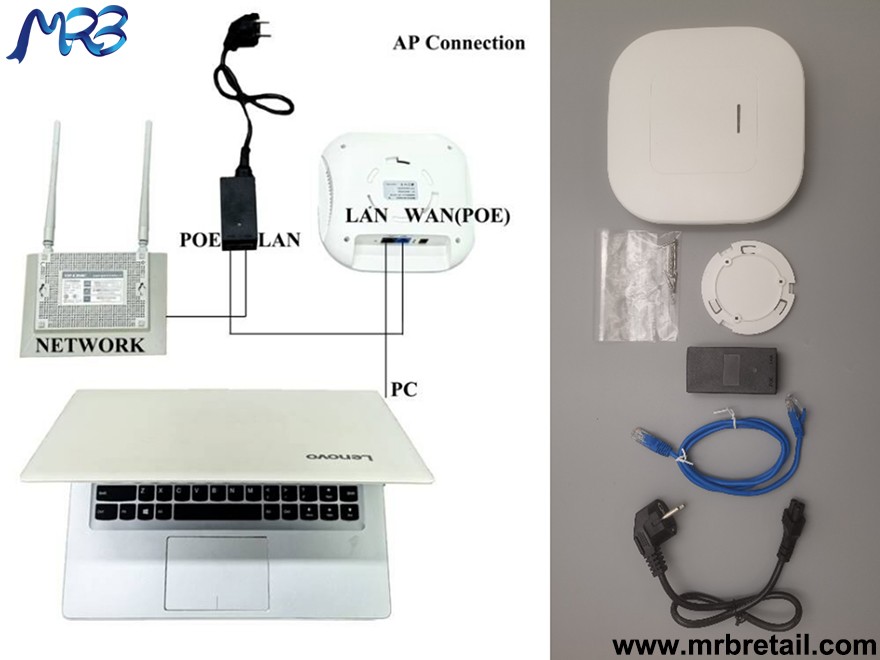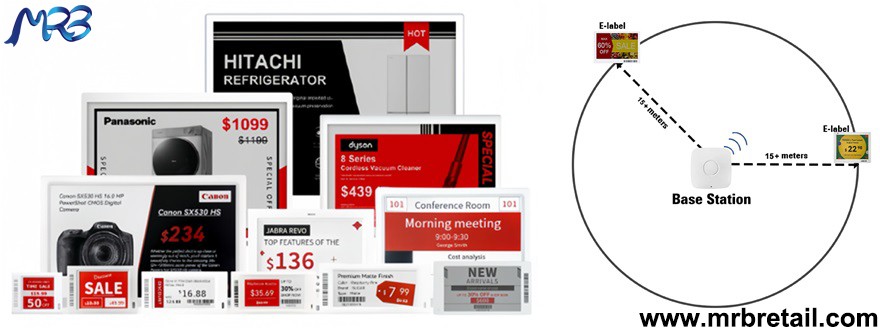In the modern retail environment, ESL Pricing Tag Bluetooth is gradually becoming an important tool for merchants to improve operational efficiency and customer experience. With the continuous advancement of technology, more and more retailers are beginning to adopt ESL Pricing Tag Bluetooth systems to replace traditional paper tags. This transformation can not only reduce labor costs, but also achieve real-time price updates, improve price accuracy and transparency. However, when implementing the ESL Pricing Tag Bluetooth system, merchants often face a key question: In a standard retail environment, is one base station enough to support 1,000 electronic shelf tags?
1. How does Pricer Electronic Shelf Label work?
Pricer Electronic Shelf Label is a device that uses wireless technology (such as Bluetooth) to communicate with a base station (also called AP access point, gateway). Each Pricer Electronic Shelf Label can display the price, promotional information, etc. of the product, and merchants can centrally manage and update these Pricer Electronic Shelf Labels through the base station. The base station is responsible for communication with the Pricer Electronic Shelf Label to ensure timely transmission of information.
2. What are the functions and performance of BLE 2.4GHz AP Access Point (Gateway, Base Station)?
The main function of AP Access Point (Gateway, Base Station) is to transmit data with Electronic Price Display Labeling. AP Access Point sends update information to Electronic Price Display Labeling via wireless signals and receives feedback from Electronic Price Display Labeling. The performance of AP Access Point directly affects the efficiency and stability of the entire ESL system. Generally speaking, the coverage, signal strength and data transmission rate of AP Access Point are important factors affecting the number of price tags it supports.
3. What factors affect the number of tags supported by the AP Access Point Base Station?
Signal coverage: The signal coverage of the AP base station determines the number of tags it can support. If the signal coverage of the AP base station is small, multiple AP base stations may be required to ensure that all tags can receive the signal.
Environmental factors: The layout of the retail environment, the thickness of the walls, interference from other electronic devices, etc. will affect the propagation of the signal, thereby affecting the effective support number of the AP base station.
Communication frequency of the tag: Different electronic shelf labels may use different communication frequencies. Some tags may require more frequent updates, which will increase the burden on the AP base station.
Technical specifications of the AP base station: Base stations of different brands and models may differ in performance. Some high-performance base stations may be able to support more tags, while some low-end devices may not be able to meet the needs.
4. How to configure AP Gateway in a standard retail environment?
In a standard retail environment, there is usually a certain space layout and product display method. According to market research, many retailers have found that one AP Gateway can usually support 1,000 Digital Shelf Price Tags, but this is not absolute. Here are some specific considerations:
Distribution of tags: If the Digital Shelf Price Tags are distributed more concentratedly, the burden on the AP Gateway will be relatively light, and it is feasible to support 1,000 Digital Shelf Price Tags. However, if the Digital Shelf Price Tags are scattered in different areas, the number of AP Gateways may need to be increased.
Store area: If the store area is large, multiple AP Gateways may be required to ensure that the signal covers every corner. On the contrary, in a small store, one AP Gateway may be sufficient.
Update frequency: If the merchant frequently updates the price information, the burden on the AP Gateway will increase, and you may need to consider adding AP Gateways to ensure timely transmission of information.
5. Case Analysis
Take a large supermarket chain as an example. When implementing the ESL Shelf Price Tag system, the supermarket chose an AP Access Point to support 1,000 ESL Shelf Price Tags. After a period of operation, the supermarket found that the AP Access Point had good signal coverage and the tag update speed could meet daily needs. However, with the increase in product types and frequent promotional activities, the supermarket finally decided to add an AP Access Point to improve the stability and response speed of the system.
6. In summary, in a standard retail environment, one base station can usually support 1,000 Epaper Digital Price Tags, but this depends on a variety of factors, including the size of the store, the distribution of Epaper Digital Price Tags, the update frequency, and the technical specifications of the base station. When implementing the Epaper Digital Price Tags system, retailers should evaluate their actual situation and reasonably configure the number of base stations to ensure the efficient operation of the system.
With the continuous development of Epaper Digital Price Tags technology, more efficient base station and electronic price tag combinations may appear in the future, further improving retailers' operational efficiency and customer experience. Therefore, when retailers select and configure the Epaper Digital Price Tags system, they need to keep an eye on market trends so as to adjust and optimize the system configuration in a timely manner.
Post time: Jan-07-2025


